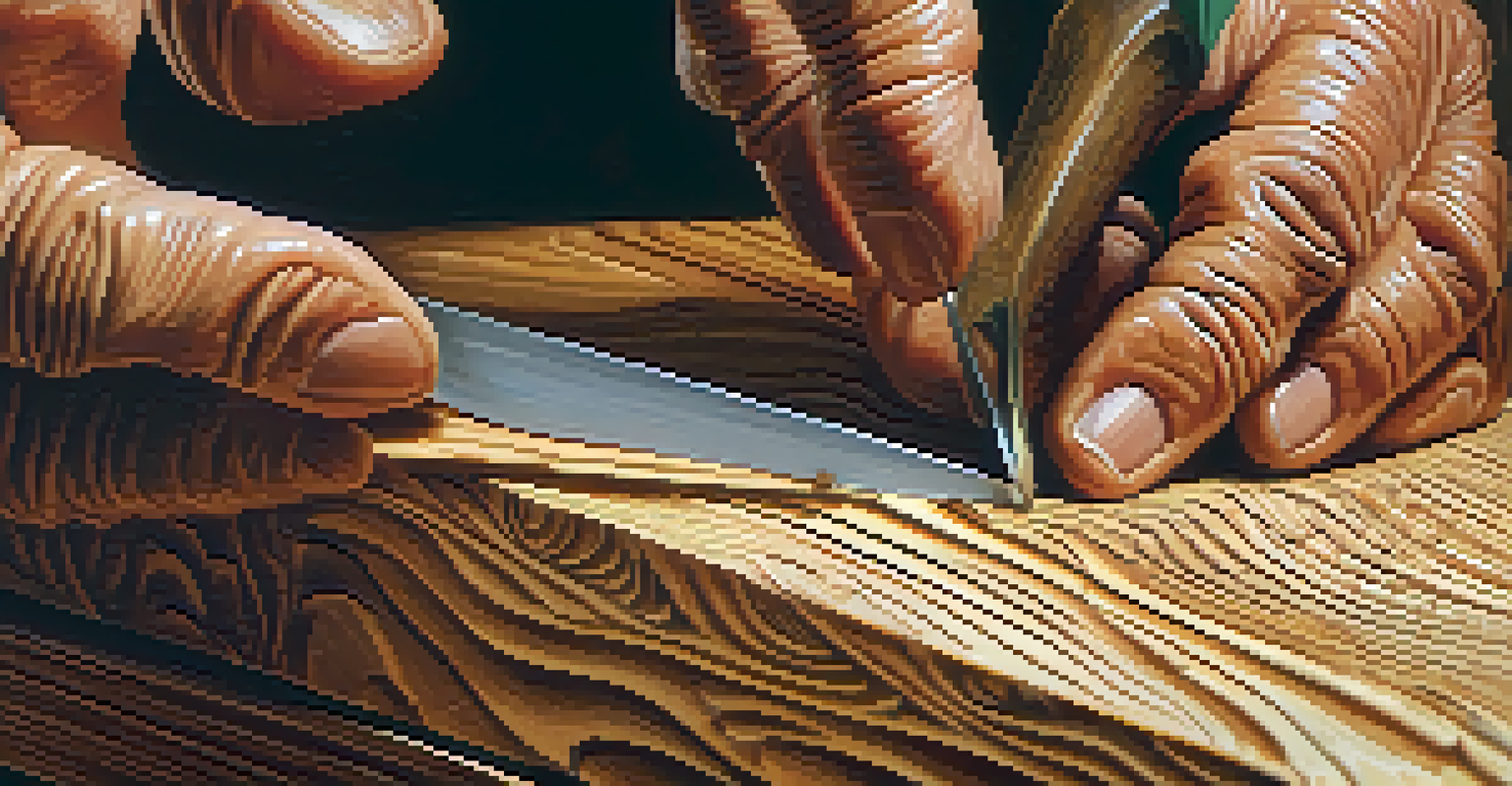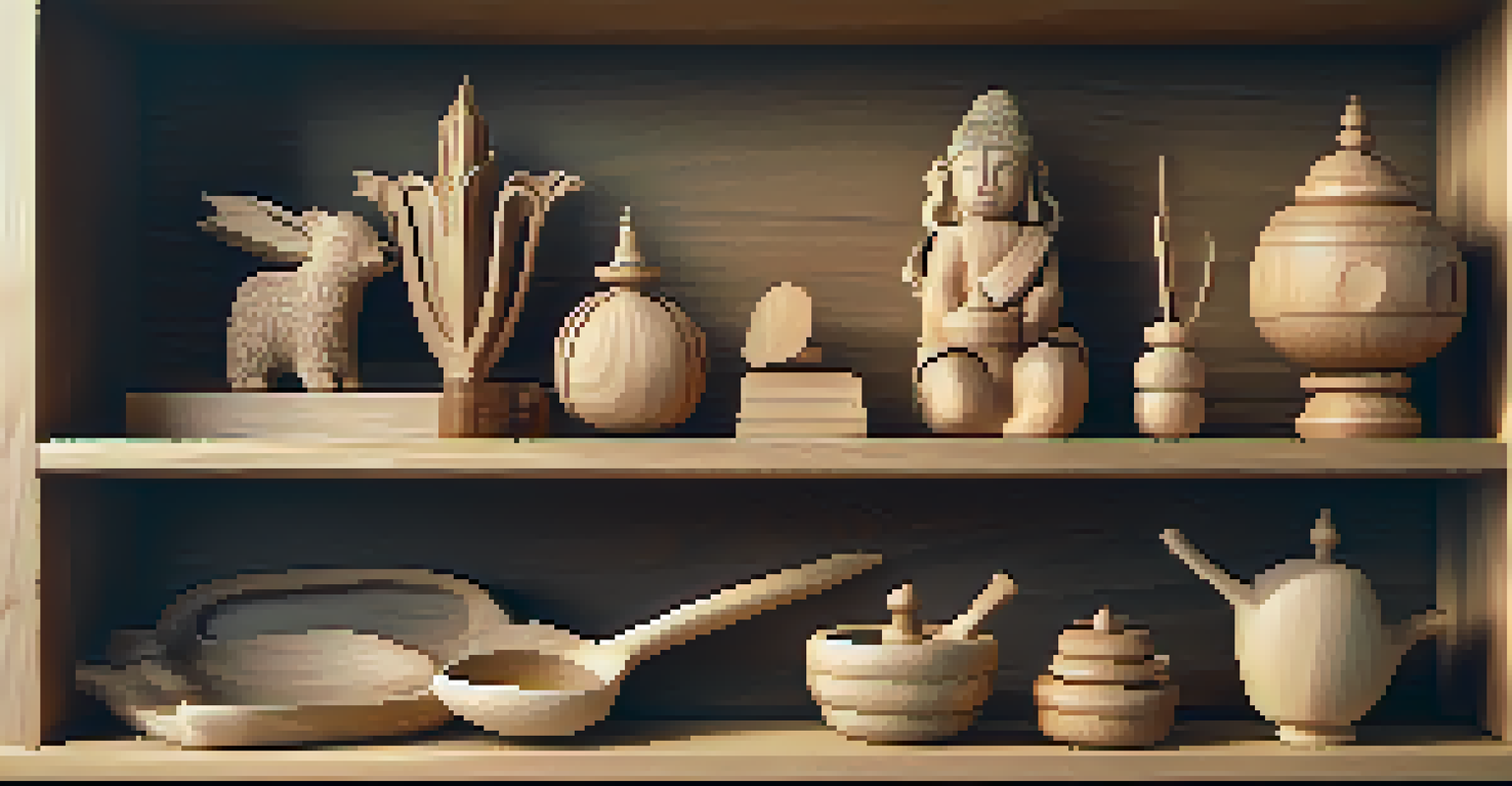Understanding Basic Wood Carving Techniques for Beginners

Introduction to Wood Carving: A Timeless Craft
Wood carving is a beautiful, artistic expression that has captivated people for centuries. It involves shaping wood into decorative or functional items using specialized tools. For beginners, understanding the basics can pave the way for creativity and skill development.
Wood carving is a way of life, a way of expressing yourself through the beauty of nature.
This craft isn’t just about creating art; it's also about connecting with nature and working with your hands. The tactile feedback you get from wood as you carve can be incredibly satisfying. Plus, the sense of accomplishment from completing a piece is unmatched.
In this guide, we'll explore fundamental techniques and tips that will help you start your wood carving journey with confidence. Whether you're looking to carve simple shapes or intricate designs, there's something here for everyone.
Essential Tools for Beginner Wood Carvers
Before diving into wood carving, you'll need the right tools. Essential items include a carving knife, gouges, and a mallet. Each tool serves a specific purpose, making them crucial for achieving different effects in your work.

A carving knife is your primary tool, ideal for detailed work, while gouges allow you to make deeper cuts and create curves. Investing in a good quality mallet will also enhance your control and precision as you strike your tools for deeper cuts.
Start with the Right Tools
Essential tools like carving knives and gouges are crucial for successful wood carving and should be chosen based on your skill level.
Remember, starting with a few essential tools is better than having a large collection you don't know how to use. As you grow in skill and confidence, you can expand your toolkit tailored to your interests in carving.
Choosing the Right Type of Wood for Carving
Selecting the right wood is a critical step in your carving journey. Softwoods like pine and basswood are excellent choices for beginners due to their ease of carving and availability. They allow for smoother cuts and are less likely to dull your tools quickly.
Every woodworker is a sculptor, and every piece of wood is a canvas waiting to be transformed.
On the flip side, hardwoods like oak and maple provide durability and a beautiful finish but can be more challenging to work with. Understanding the characteristics of different woods will help you select the best material for your projects.
Always remember to consider the grain of the wood as well. Straight grain is easier to carve, while knots can pose challenges. Starting with softer woods will build your confidence and skill before tackling the more complex hardwoods.
Basic Carving Techniques to Start With
As a beginner, focusing on a few basic techniques can set a solid foundation for your carving skills. The two primary techniques are whittling and chip carving. Whittling involves removing small pieces of wood to shape your design, while chip carving focuses on removing chips to create patterns.
Another essential technique is relief carving, where the design is carved into a flat surface, creating depth. Each of these methods has its unique charm and application, so experimenting with them will help you discover your preferences.
Choose the Best Wood Type
Selecting softwoods like pine or basswood is ideal for beginners, as they are easier to carve and help build confidence.
Ultimately, practicing these techniques consistently will help you develop muscle memory and improve your overall carving ability. Start with simple shapes and gradually increase the complexity as you become more comfortable.
Safety Tips Every Wood Carver Should Know
Safety should always be a priority when wood carving. Using sharp tools can lead to accidents if not handled properly, so always cut away from your body and keep your fingers clear of the blade's path. Wearing protective gear, like gloves and goggles, can also help prevent injuries.
Additionally, maintaining your tools is crucial for both safety and efficiency. Dull tools require more force, increasing the risk of slips. Regularly sharpening your blades will ensure smooth cuts and a safer carving experience.
Lastly, always work in a well-lit and organized space. A tidy workspace minimizes distractions and allows you to focus on your carving, making the process safer and more enjoyable.
Practice Projects for Beginner Wood Carvers
One of the best ways to hone your wood carving skills is through practice projects. Start with simple items like wooden spoons, small figurines, or ornaments that require minimal carving techniques. These projects will help you build your skills while allowing you to see tangible results.
As you gain confidence, consider moving on to more complex items like bowls or intricate relief carvings. Each project will challenge you and teach you something new, helping to further your development as a carver.
Join Wood Carving Communities
Engaging with wood carving communities offers support, resources, and inspiration, enhancing your learning experience.
Don't forget to have fun with your projects! Experimenting with different styles and techniques can lead to unexpected and beautiful results, making your carving journey all the more exciting.
Joining Wood Carving Communities for Support
Engaging with wood carving communities can significantly enhance your learning experience. Online forums, local clubs, or social media groups provide valuable resources, tips, and support from fellow carvers. Connecting with others who share your passion can inspire creativity and foster friendships.
These communities often share tutorials, project ideas, and troubleshooting advice, making it easier for beginners to navigate challenges. Plus, attending workshops or carving events can offer hands-on experience and personalized guidance.

Don't hesitate to ask questions or share your progress within these communities. The feedback and encouragement you receive can be incredibly motivating, making your wood carving journey all the more rewarding.